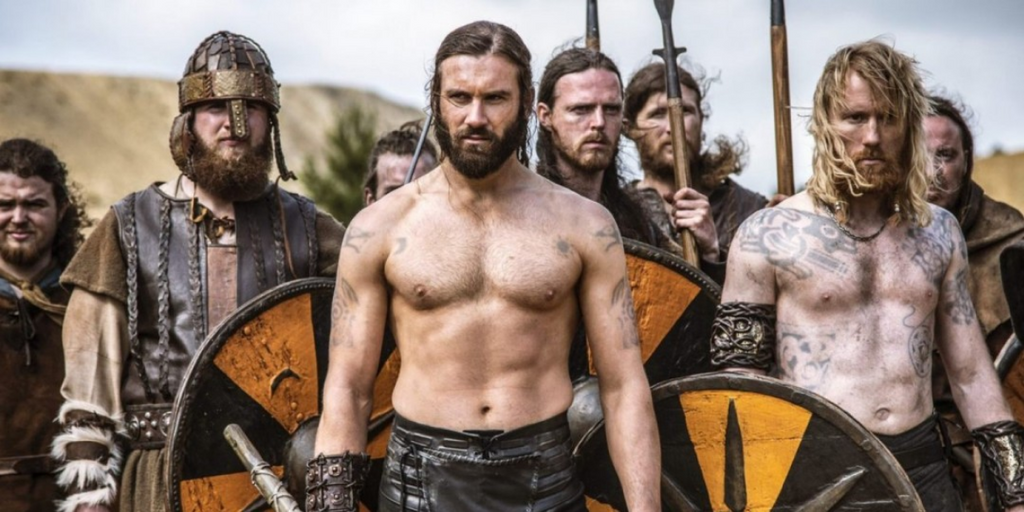10 Things About The Vikings That The Media Hasn't Told You (Part 2 of 2)
What we know about the Vikings through modern arts is just the way the authors want us to see. They might alter one detail a little bit in order to make their story more awe-inspiring. For example, some artists add the horns or wings to the Viking helmets to make them look more awesome. Though it captivates our attention, it misses the historical points. This gradually results in our misunderstanding of the Vikings. To finish Top 10 Things About the Vikings That The Media Hasn't Told You, this blog post is going to give you the other 5 Viking Things. (See Part 1 HERE)
6. THERE EXISTED HUMAN SACRIFICE IN THE VIKING AGE
It is an inhuman treatment of both the dead and the living to bury corpses in one grave. But in the Viking time, there was a tradition of human sacrifice in funerals. In some archaeological findings, there were skeletons in different positions. At Trelleborg, for example, people found skeletons in 3-meter-deep wells. This human sacrifice was believed to be conducted right before the Viking fortress was constructed. To the Vikings, well held an important role for they directly connected with Odin the Allfather who once sacrificed one eye into the well.

Skeleton found in wells in Trelleborg

One of the well found Viking human sacrifice
In some grave mounds, people have found skeletons assumingly belonging to the master and the slave. For example, one grave found in Birka, near Stockholm capital of Sweden, was the burial of a great warrior. Because there were numerous valuable possessions buried with him. A thrall (Viking slave) was also buried without any possession. The slave was beheaded and is thought to have been sacrificed to serve the master in the afterlife.
7. MANY ENGLISH WORDS CAME FROM THE VIKINGS
For example, we owe the word "berserk" to the Vikings. In Viking literal accounts, there existed the Viking berserkers who would join the battles and fight in a frenzy attitude. The Viking berserkers were described as the armorless warriors. The berserkers consisted of two compounds "berr" meaning "bare" or "bear" while serkr meaning "shirt". (See more: English Words with Old Norse Origin)
8. THE VIKINGS ATE WHAT LAND PROVIDED
Drinking blood of the enemies or hungrily eating meat in a filthy manner? Are you thinking about any ancient tribe? Because that's not the Vikings and, of course, not the Viking eating habits.
The Vikings cherished what nature gave them. Their diet was quite healthy though. The Vikings drank mead and milk nearly every day. The meals would include red meat, fish, wild greens, vegetables, fruits, and bread.

Modern remake of Viking food
9. THE MAJORITY OF THE VIKINGS WERE FARMERS
Viking warriors only took up a small portion of the whole population. Farming, fishing, and hunting were the main tasks that they carried out every day. They earned their living by doing such normal stuff though. Some people might find this shocking but truth is it. Anyway, Viking farmers were different from farmers of other regions. What separated them from others were their deeply-ingrained belief in Norse Pantheon. Somewhere inside the Viking farmers still echoed a voice of their ancestors who used their simple axe to bend the world to their will.

10. VIKING CHILDREN REACHED ADULTHOOD WHEN THEY TURNED 12 YEARS OLD
12-year-old children in this day and age just hit their puberty marking the very important phase in their life. But that is nothing to compare with the Viking children of 12 years old. In the Viking age, reaching 12 meant that child had to start bearing the responsibility of a true adult. A Viking boy would follow father to the farm and learn how to cultivate or to the jungle and learn how to hunt. A Viking girl would follow mother to master many household skills. While the Viking boy must learn the survival skills to be the pillar of the family, the Viking girl must master all the household skills from cooking to sewing to support the family. By 20, nearly all the Vikings were married. (See more: Viking Children Life)
TOP 10 VIKING THINGS THAT THE MEDIA IS YET TO TELL YOU
-
The Vikings wore no horned helmets
-
Viking laws were strict and detailed
-
The Vikings respected women
-
Viking Women had rights
-
The Vikings were pretty clean
-
There existed human sacrifice in Viking Age
-
Many English words came from the Vikings
-
The Vikings ate what land provided
-
The majority of the Vikings were farmers
-
Viking children reached adulthood when they turned 12





Not too shabby. TRU SKJOLD!!
Really great info!!!!